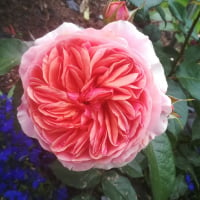This Forum will close on Wednesday 27 March, 2024. Please refer to the announcement on the Discussions page for further detail.
Creocote
 Penny_Forthem
Posts: 455
Penny_Forthem
Posts: 455
We've created a new raised bed out of wood and creocoted it.
We cannot find out if we can fill the bed and plant it straight away, or if we should leave it a while before filling.
Anyone any idea please?
We cannot find out if we can fill the bed and plant it straight away, or if we should leave it a while before filling.
Anyone any idea please?
Beautiful North Wales - hiraeth
0
Posts
This material should not be allowed into drains, sewers or other water courses. In the wet state harmful to animals and plants but once dry (48 hours) product is not considered unsafe. Splashes on leaves of plants will cause burns but long term systemic damage is unlikely.
This is for creocote, not creosote.
The new product is Creocote which is, we are told, safe to use.. Apply and let it thoroughly dry before filling with soil/compost.
For raised beds, I simply use pressure treated wood and line with old compost bags much as @BobTheGardener describes. Edibles/non edibles are not affected using this method.